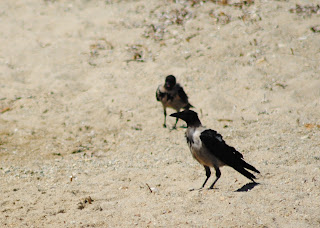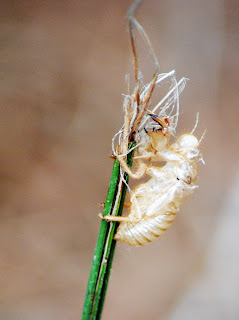This blog may help people explore some of the 'hidden' issues involved in certain media treatments of environmental and scientific issues. Using personal digital images, it's also intended to emphasise seasonal (and other) changes in natural history of the Swansea (South Wales) area. The material should help participants in field-based modules and people generally interested in the natural world. The views are wholly those of the author.
Saturday, 30 September 2017
Wood Burners a No-No?
The Mayor of London has apparently called for a ban on wood-burning stoves in the city (https://www.theguardian.com/environment/2017/sep/29/air-pollution-sadiq-khan-calls-for-ban-on-wood-burning-stoves). It is claimed that the smoke mingles with diesel fumes with a very negative impact on air quality. The move will probably not go down well with trendies. And what about bonfire night?
Phew, Cattle Are Heating Us Up More Than We Thought?
Methane, from both ends of the digestive processes of cattle, is actually a more powerful 'greenhouse gas' than carbon dioxide and seems likely to have a strong impact on climate change. The recent claim that the actual emissions from cattle are some 11% higher than estimated is cause for concern (https://www.theguardian.com/environment/2017/sep/29/methane-emissions-cattle-11-percent-higher-than-estimated). The fact that more land appears to be cleared for the generation of cattle (and associated milk) is only likely to exacerbate our climate problems.
Chickens Come Home to Roost
The domestic chicken (a derivative of the Himalayan Jungle fowl) is, on the basis of shear numbers, the most successful species associated with our own (although relatively few live as the birds shown in the above picture). Admittedly, the success is based on humans eating both the eggs and flesh they produce. There has, however, been a recent uproar caused by reports claiming that some companies (dealing with a wide range of UK supermarkets) mislead customers with respect to the age of the meat and its safety (https://www.theguardian.com/business/2017/sep/29/chicken-safety-scandal-2-sisters-faces-parliamentary-inquiry-after-revealations). Chicken products can carry risks associated with bacterial (salmonella) and viral factors (bird 'flu). The drive for cheaper and cheaper products appears to make producers 'cut corners' (people might well remember the recent thus about using banned insecticides to control parasites on chicken flocks in The Netherlands). It is a sad fact that people on low incomes are particularly likely to suffer health consequences from some of these practises (although the UK scandal might well have also impacted on some of the more comfortably off). Cheap does not allows have to mean nasty but we should, perhaps, be prepared to pay a little more for safety.
Friday, 29 September 2017
Wednesday, 27 September 2017
Sugar, Sugar
There has been much media excitement about the EU removing its quota arrangement for sugar beet production thus maximising European production and refining of sugar (bbc.co.uk/news/business-41412717). There are a number of potential problems associated with this decision. Firstly, the consumption of sugar in Europe is already much too high with detrimental effects on obesity, incidence of diabetes mellitus and dental health. Secondly, the decision makes sugar cane growing in some countries even less viable. And, thirdly, the land used to grow yet more sugar beet could be used to grow other more needed crops (or even to be kept aside to maintain biodiversity).
Friday, 22 September 2017
A Song Unheard?
There is a somewhat odd finding that highly toxic Pumpkin toadlets from Brazil apparently cannot hear their own mating calls (https://www.theguardian.com/environment/2017/sep/21/scientists-discover-unique-brazilian-frogs-that-are-deaf-to-their-own-mating-calls). It is generally argued that actions, with costs, such as this auditory display would disappear from the animal's repertoire very quickly if they served no real purpose. It takes energy to call and the calls could attract predators (unlikely in this case as the animals seem to have no predators due to their toxicity) and/or parasites. It is argued that they might have only recently lost the ability to detect and respond to these sounds but this is an untestable hypothesis (and is not very convincing). Perhaps the persistent sound generation serves some other function such as visually confirming the vigour of the male?
Brainless Sleep?
The claim that identification of periods of quiescence in upside down jellyfish (who lack anything approximating to a brain) proves that that organ is not essential for sleep is somewhat contentious (https://www.theguardian.com/science/2017/sep/21/caught-napping-snoozing-jellyfish-prove-a-brain-isnt-necessary-for-sleep). That only works as an explanation if you accept that the period of relative inactivity really equates with sleep in organisms with a more advanced central nervous system. It seems, to me, to be a rather large leap of faith.
Live Confetti?
I also wholly disapprove of the reported fad of buying containers with reared butterflies for the guests to use as confetti in weddings (https://www.theguardian.com/commentisfree/2017/sep/21/wedding-accessory-animal-cruelty-butterflies). It is cruel as well as being somewhat Disneyesque. It may well also make life difficult for our already challenged insects (in terms of disease transmission et cetera). It seems almost as bad as religious and political figures releasing 'doves of peace' (often to be 'snapped up' by waiting birds of prey).
Friday, 15 September 2017
Sardinian Sojurn
Some of the plants and critters from my recent visit to Sardinia in the area around San Teodoro and the coast near Alghero. The first item is a relative of the daffodil Pancratinum maritimum and then a weird flower I can't identify. The dragonfly is probably a Common darter (Sympetrum striolatum). A grasshopper and a bush cricket were also seen. A cicada final nymph stage case was found on vegetation below pines. Lepidoptera included a Hummingbird hawk moth (Macroglossum stellatarum); a probable Brown argus (Aricia agestis); a Long-tailed blue (Lampides boeticus); a Geranium bronze (Cacyreus marshalli) and a possible Geranium argus (Eumedonia eumedon). Hymenoptera included Andrena flavipes; Xylocopa violacea; possible Melecta albifrons and definite Colletes halophilus. Temperature appeared to kill lots of riverine fish resembling Thick-lipped grey mullet (Chelon labrosus). There were also lots of Common wall lizard (Podarcis muralis). Birds included Little egret (Egretta garzetta); Hooded crow (Corvus corone cornix) and fishing Cormorant (Phalocrocorax carbo).
Way Down South
Apologies for the hiatus in posting but have been driving to a wedding on Sardinia with a side trip back via Rotterdam. These are some of the natural history high-lights on the trip down to Livorno (for ferry crossing). In Langres (France) there were masses of roadside flowers including Meadow thistle (Cirsium dissectum); Field scabious (Knautia arvensis) and Slender knapweed (Centaurea debeauxii). At a service station near Bourg-en-Bresse, there was an invasion of an unidentified moth (top and underside views shown). In Chiavari (Italy), home town of Christopher Columbus, spotted this neat Moorish gecko (Tarentola mauritanica).
Subscribe to:
Comments (Atom)
-
I n the UK and US, a pparently popular and successful vegan/vegetarian restaurants are reportedly closing or adding meat to their menus ( ...
-
Early ripening fruit may seem convenient but some folk think it confirms environmental stress. There's also a possibility th...











































%20mating%20NWCW.jpg)

